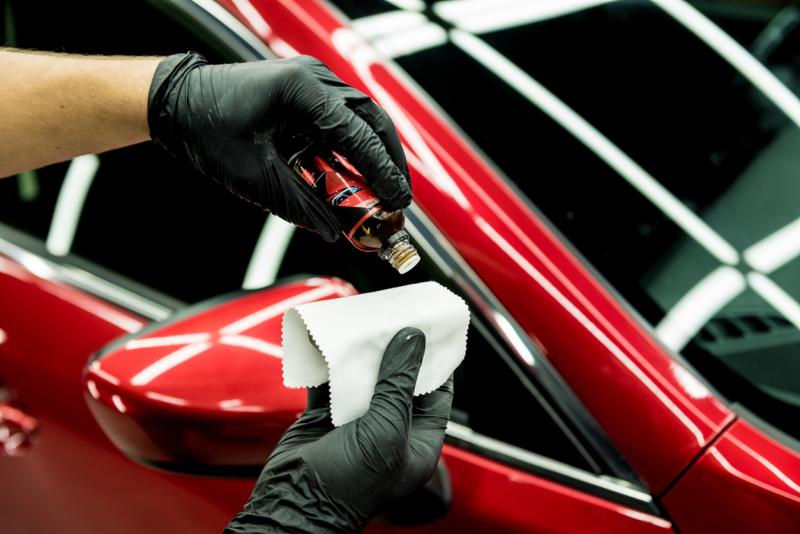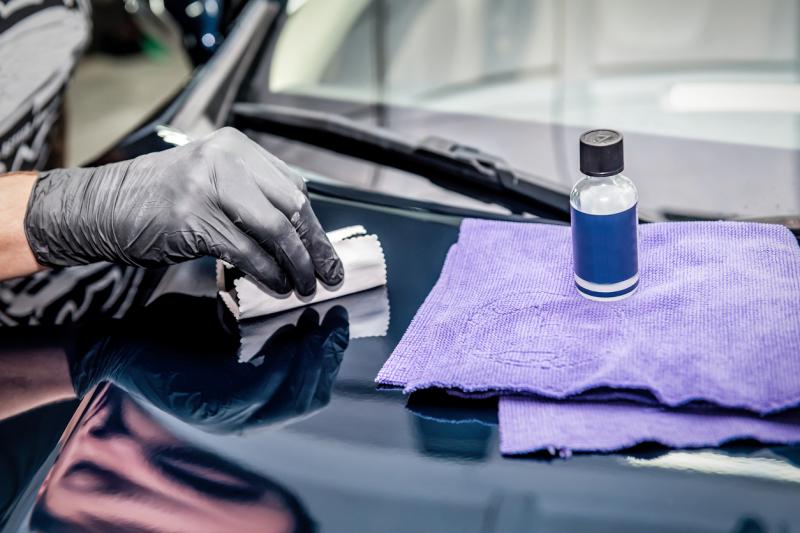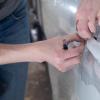How Ceramic Coating Works

Have you ever wondered how ceramic coating works? The basic premise of these coatings is they provide a hard outer shell of protection and shine for your vehicle. This protects the paint and clear coat, keeping your vehicle looking "today years old" much longer. But, how do they fulfill this role and protect your paint? We look more closely at these popular coatings below.
What are ceramic coatings anyway?
Ceramic coatings are liquid polymers applied to your vehicle like a topcoat. These polymers create a resilient chemical bond with the paint and clear coat surface at the microscopic level. This coating is a flat and highly water, dust and dirt-resistant surface that is easier to keep clean. It repels water and creates a quick beading effect for faster drying. Dirt, dust and debris do not stick to the surface as easily, either.
Each brand of coating has its own features and attributes. This includes a difference between ingredient percentages, product quality and application methods. However, all of these coatings are liquid polymers. By design, each one chemically bonds to the vehicle surface to form a semi-permanent shell of protection. In fact, they protect your car's paint job better than any other type of auto detailing product, such as wax or sealant.
With a ceramic coat on your car, truck or other vehicle, you spend less time washing your vehicle. The material repels water, dirt and debris very well. But it is only as thick as a human hair. Despite their microscopic presence, ceramic coatings provide a barrier to the damage of UV rays, water spotting, contaminants and chemicals. It can even help prevent spray paint from permanently damaging your vehicle's appearance.
Ceramic coatings' hardness is rated according to a pencil scale of 0 to 9. For example, a coating with a rated hardness of 9H is exceptionally hard, whereas one on the lower end of the scale is less hard and less protective.

Grades of Ceramic Coatings
The grades of ceramic coatings include:
Professional Grade
Professionally applied, installation of this grade of coating requires specialized equipment and methods because of its high SiO2 percentages. Some offer a lifetime warranty.
High-Quality DIY
If you want to apply your own coating, you will use a DIY product. These products contain a lower percentage of SiO2 and are easier to apply. You can expect a strong protective layer that lasts about two to five years and reduces your car's external maintenance time. But the results are not as effective as with professional-grade.
Cheap Coatings
Cheap ceramic coatings are usually marketed with ridiculous claims. One such boast is a 10H hardness when the rating scale only includes ratings of 0 to 9. Another claim is permanence or a five-year life expectation. Because these are basically diluted and less effective versions of professional quality products, you cannot expect these claims to come true. You should only expect a slightly better layer of protection when compared to simple car wax.
Common Ingredients in Ceramic Coatings
Most ceramic coating ingredients are similar, although each manufacturer uses its own specific recipe and percentages. You can expect your coating to contain the following ingredients:
- Nano SiO2, a microscopic silica dioxide that provides the hard shell of protection
- Nano TiO2, the nanometric titanium oxide that improves water repellency
- Activation of fluorine, a substance that makes it hard for dust and dirt to stick to the vehicle surface
- Brightening silicon, tiny particles that create the shiny surface and gloss effect
- Polysilazane, an ingredient creating anti-graffiti and temperature tolerance effects
Ceramic coatings provide a long-lasting, durable and resilient protective layer for your vehicle, thanks to the ingredients above. You can expect this coating to last two to five years on average. It protects your paint from rain, hail, sleet, snow and car washes. Eventually, the layer starts to wear thin because of its exposure to the elements like UV light, weather, environmental contaminants and chemicals.
The Curing Process
Some ceramic coatings cure in as little as 24 hours. But this largely depends on your vehicle's paint quality, the associated prep work, installer's skill level and the equipment and materials used. The temperature of the room in which the coating is applied also determines curing time. The same is true of exposure to direct sunlight or cloudy weather.
After applying your coating, you should keep your vehicle garaged or within another low-dust, temperate environment. You need to keep contaminants from potentially adhering to the finish as it cures. But you can typically expect to be able to drive your vehicle within 24 to 36 hours after application.
Are ceramic coatings right for my vehicle?
There are circumstances under which you should not apply this coating to your car, truck or SUV. This is the case if your vehicle has damaged paint. The coating does not improve paint condition or remove scratches or swirls. In many cases, it can accentuate or amplify these markings. It can, however, help prevent this damage from occurring.
Many car dealerships try to upsell ceramic coatings to auto buyers. But it is important to consider the dealership cost and coating quality as compared to an outside specialist's offerings.
What do ceramic coatings cost?
A professionally-applied coating has many benefits over DIY installations. This makes it important to carefully consider your decision to use a DIY application, instead of letting the professionals apply a longer-lasting, more protective and higher quality product. Professionals apply this protection to your vehicle for anywhere between $600 and $4,000. The final price depends on your vehicle size and type, involved preparatory work and the installation process. There are typically package levels from which you can choose, including the appropriate warranty that can range from one year to multiple years.
In comparison to the pro coatings, DIY variants cost between $70 and $200. But you will not have the benefit of a warranty, nor the longer-lasting, more resilient and more attractive results of a professional application.
More to Read:
Previous Posts:



